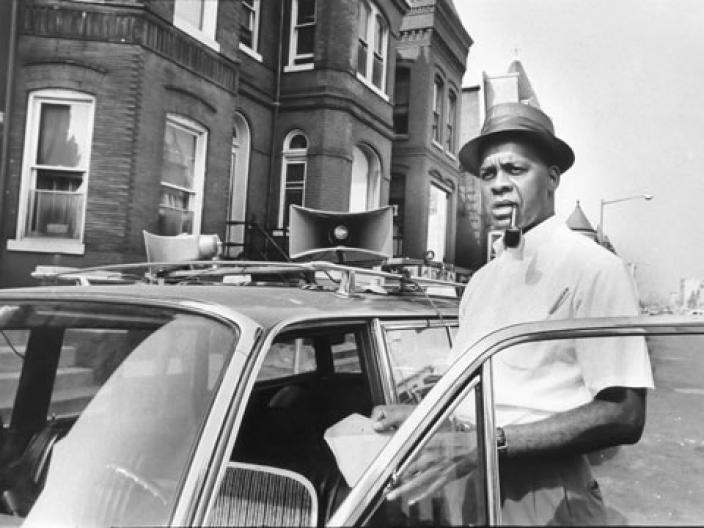Learn about Julius Hobson’s amazing 1960s artistic activism campaign
As my home city of New York has appointed a rat czar and recently held its first Anti-Rat Day of Action to try to get our rat problem under control, I’m reminded of Julius Hobson and how he took on a rat problem in Washington, DC, many decades ago:
What was Julius fighting?
In the 1960s, rats were a serious problem in much of Washington, DC, specifically in Northeast and Southeast DC – the neighborhoods where residents were predominantly People of Color. After inaction by the local government to address the rat problem, activist Julius Hobson decided to step up.
How did he solve the problem?
Julius bought traps and caught 10-12 giant rats from the street. He put them in cages and strapped those cages to the roof of his station wagon. Then he drove to the white, wealthy neighborhoods — which didn’t have a rat problem – with a loudspeaker and signs threatening to release the rats.
Hobson told the press that “‘a DC problem usually is not a problem until it is a white problem,” and so he decided to “go ahead and make it a white problem.”
For multiple Saturdays, Hobson held “Rat Relocation Rallies” in Georgetown, one of the richest and whitest neighborhoods in DC. He loudly repeated his threats, raising the stakes by claiming he had a “rat farm” in the city where he and his associates kept chicken coops full of rats. He vowed that all the rats would soon be released in their neighborhood if the government didn’t act.
Because many members of city and federal offices lived in Georgetown, this quickly got their attention. The press also loved the story and wrote about it extensively as it unfolded – often exaggerating the specifics.
Within a short time, Hobson’s strategy proved successful: DC finally agreed to fund rat extermination programs in the affected neighborhoods.
Another fun twist to the story: the threats were all a bluff. Hobson didn’t have any more rats than he had in the cages he displayed. There were no rat farms or chicken coops full of rats. But he didn’t need them. He just needed to force those in power to see the smallest bit of the problem – to stop them from pretending it was invisible – to achieve success.
What can we learn from Julius and his rats?
When we think about examples of artistic activism, we always like to synthesize some key takeaways that can apply more broadly to social justice work. We love this example because it followed these principles that we’ve seen time and again can make for a successful campaign:
Make the “invisible” visible
Surprise works
Go to where the power is
Create an irresistible story
Find more inspiring stories of artistic activism at Actipedia.org.



